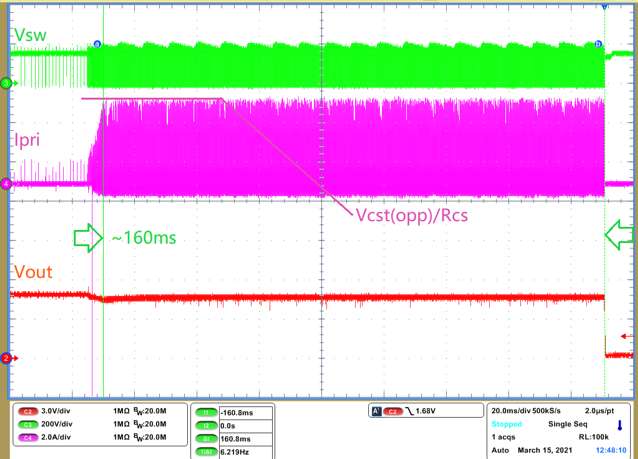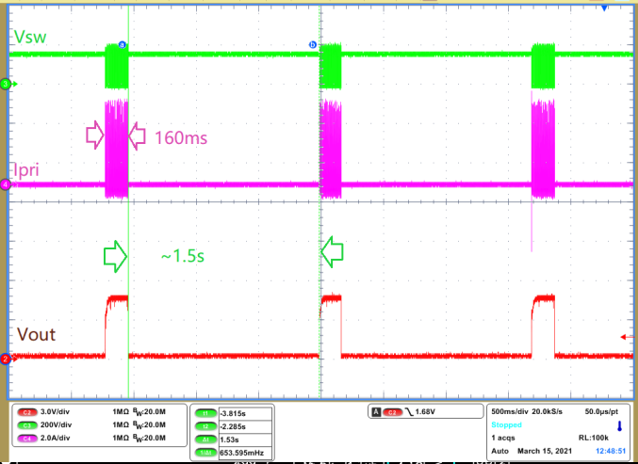SLUAAF9 September 2021 UCC28782
- Trademarks
- 1 Initial Board Visual Inspection and Start-up Check
- 2 Typical System Operating Waveforms
- 3Typical System Protection Waveforms
- 4Common Issues and Solutions
- 5References
3.1 Over-Power Protection (OPP)
The two key things used to identify what protection happens on the board are delay to action and action, which also listed in UCC28782 data sheet Table 8-3, for OPP, delay to action shown in Figure 3-1is VCST ≥ VCST(OPP) and maintain above 160ms, action shown in Figure 3-2is tFDR restart(1.5s).
 Figure 3-1 OPP Delay to Action
Figure 3-1 OPP Delay to Action Figure 3-2 OPP Action
Figure 3-2 OPP ActionCH3: Low side FET Vds (Vsw), CH4: Transformer primary winding current (Ipri), CH2: Output voltage (Vout).